Best evergreen shrubs: 10 choices for year-round interest
Add the best evergreen shrubs to your yard and you can benefit from their flowers, foliage, color and structure all year long
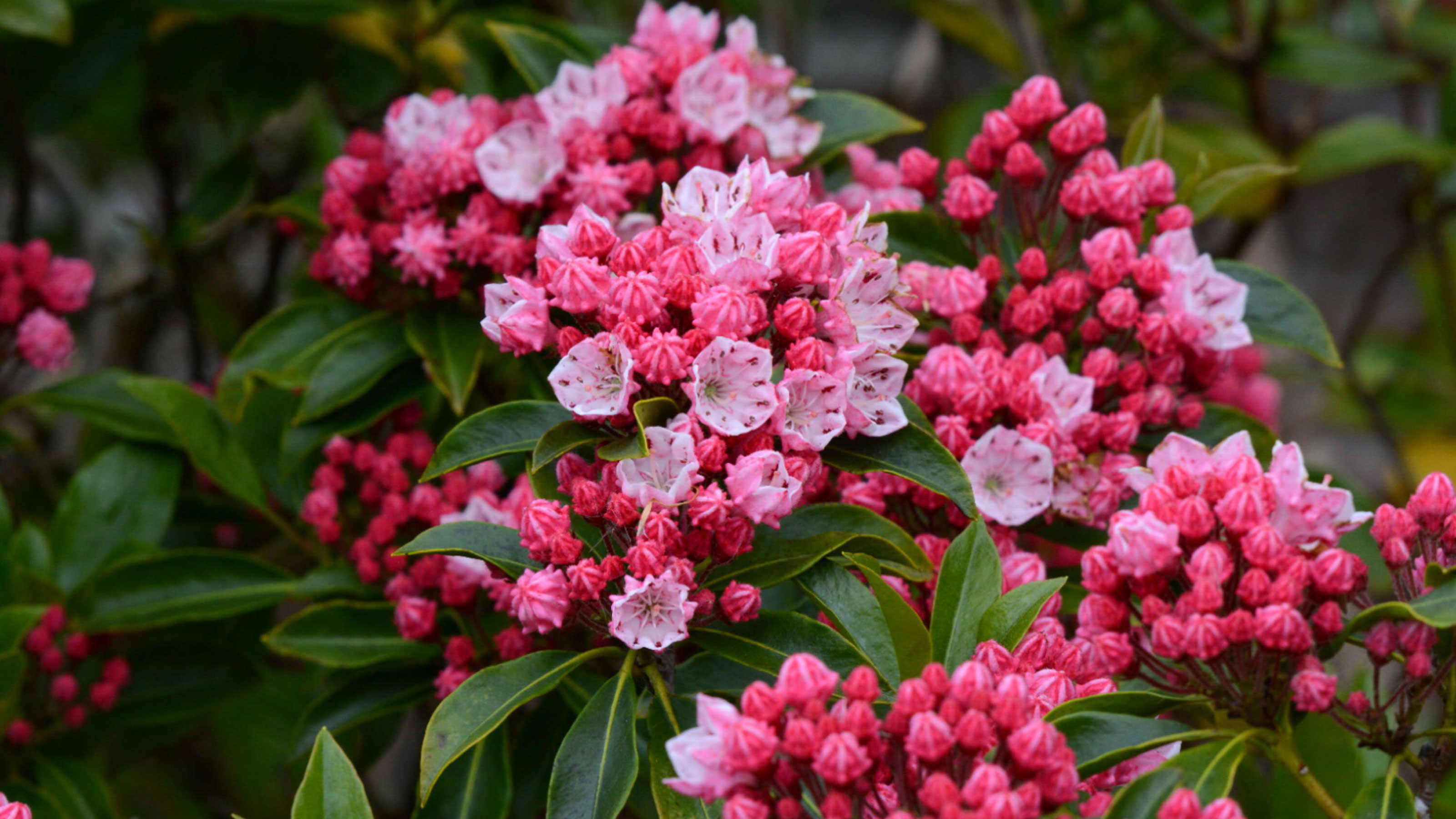

Evergreen shrubs bring us year-round presence, continuing foliage appeal, beautifully patterned leaves, colorful flowers across the year and some also provide attractive fall fruits – both for us and for the birds.
There are evergreen shrubs for every season. While it is true that few flower in midwinter in our coldest states, the foliage of many is attractive in itself and varies from the large dramatic leaves of some rhododendrons to the delicate needles of heathers.
Louise and James Bush-Brown, writing in America’s Garden Book say: 'Unfortunately, the common practice of impulsively buying flowering shrubs only in spring when they are in bloom is reflected in our urban and suburban landscape scene. A great crescendo of forsythia and lilac, followed by rhododendron and azalea, with little else before or after.'
Just like the best evergreen trees, there are plenty of shrubs that offer year-round appeal. When we remember the many gold, yellow, cream and white variegated forms of evergreen shrubs, not to mention those tinted in bronze or amber or gold – well, it is easy to see how there are so very many from which to choose.
It is especially important to keep winter hardiness in mind too. Some evergreens are hardy almost everywhere in the US, while some insist on sub-tropical winter conditions, so choose thoughtfully.
Inject year-round appeal with these 10 evergreen shrubs
However stunning it may be at the peak of its display, no one evergreen shrub does everything, so we return to one of the few universal horticultural rules: right plant, right place.
Choose the plant whose features you admire, and which fits well with other plants nearby and which will thrive in the conditions where you would like it to grow.
Get your landscaping with evergreens right and these useful shrubs can become a valuable addition to your plot.
1. Boxwood (Buxus)
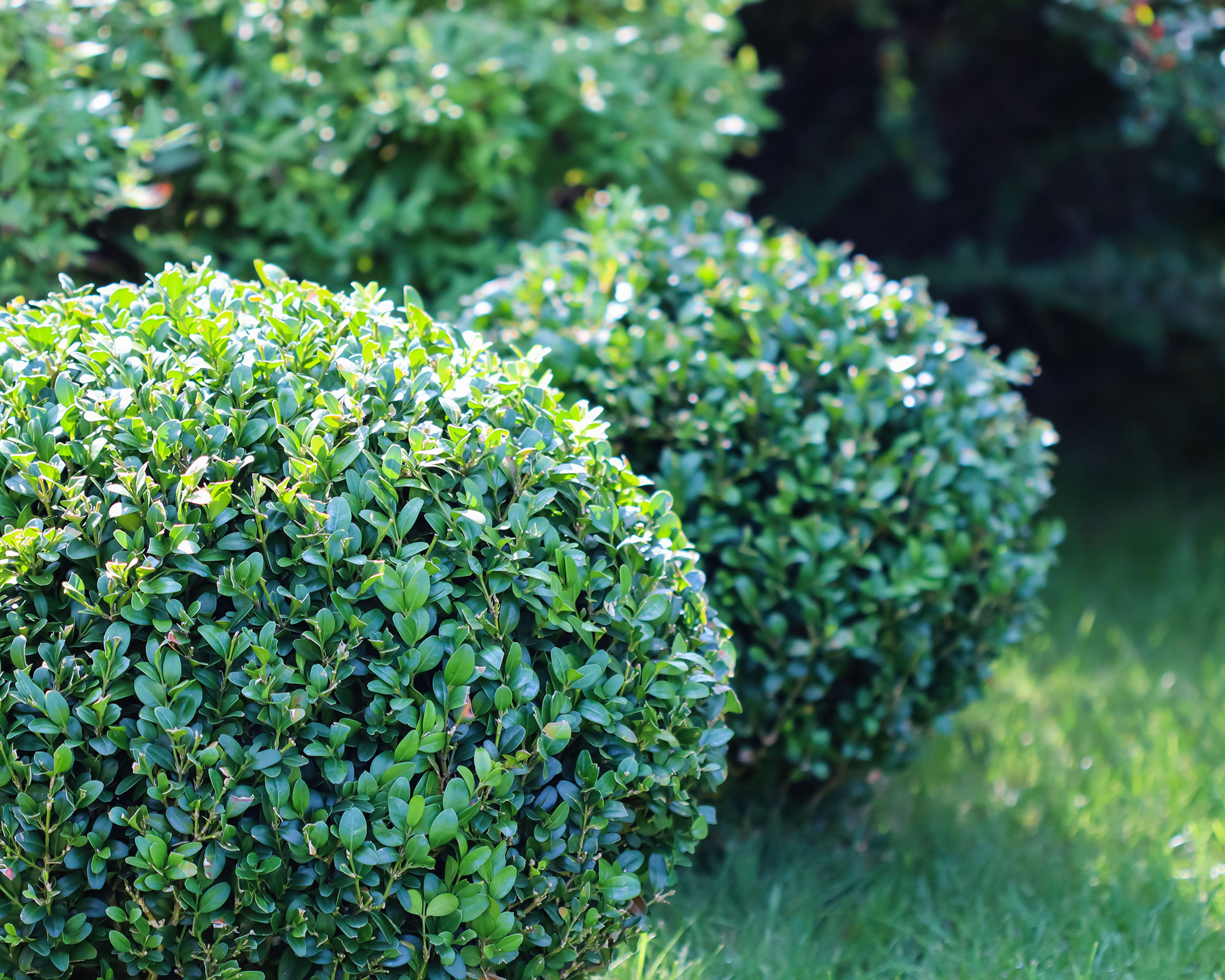
Boxwood is easy to clip into shape for a more formal look
- Hardiness: USDA Z5 (RHS H6)
- Height: 1-12ft (30cm-3.5m)
- Uses: Low hedging, formal specimens, foundation planting, containers
Boxwood is an invaluable, cold-hardy, small-leaved, dark green shrub, much used for foundation planting and to provide contrast in informal, natural style plantings. It develops into a variety of shapes from neat, rounded balls to taller informal bushes.
'What makes this widely used plant so valuable is the ease of growing, year-round interest, tolerance of different growing conditions, and versatility in the landscape,' say the experts at Proven Winners. 'Boxwood is also a deer resistant plant.'
Although it's generally considered to be a low-maintenance shrub, the issue of box blight can be a problem to consider, so look for healthy new disease-resistant boxwoods flagged as NewGen® Boxwood. Top varieties include NewGen Independence® (‘SB 108’) (rounded shape, slow growing) and NewGen Freedom® (‘SB 300’) (rounded shape, stronger growing).
2. Scotch heather (Calluna)
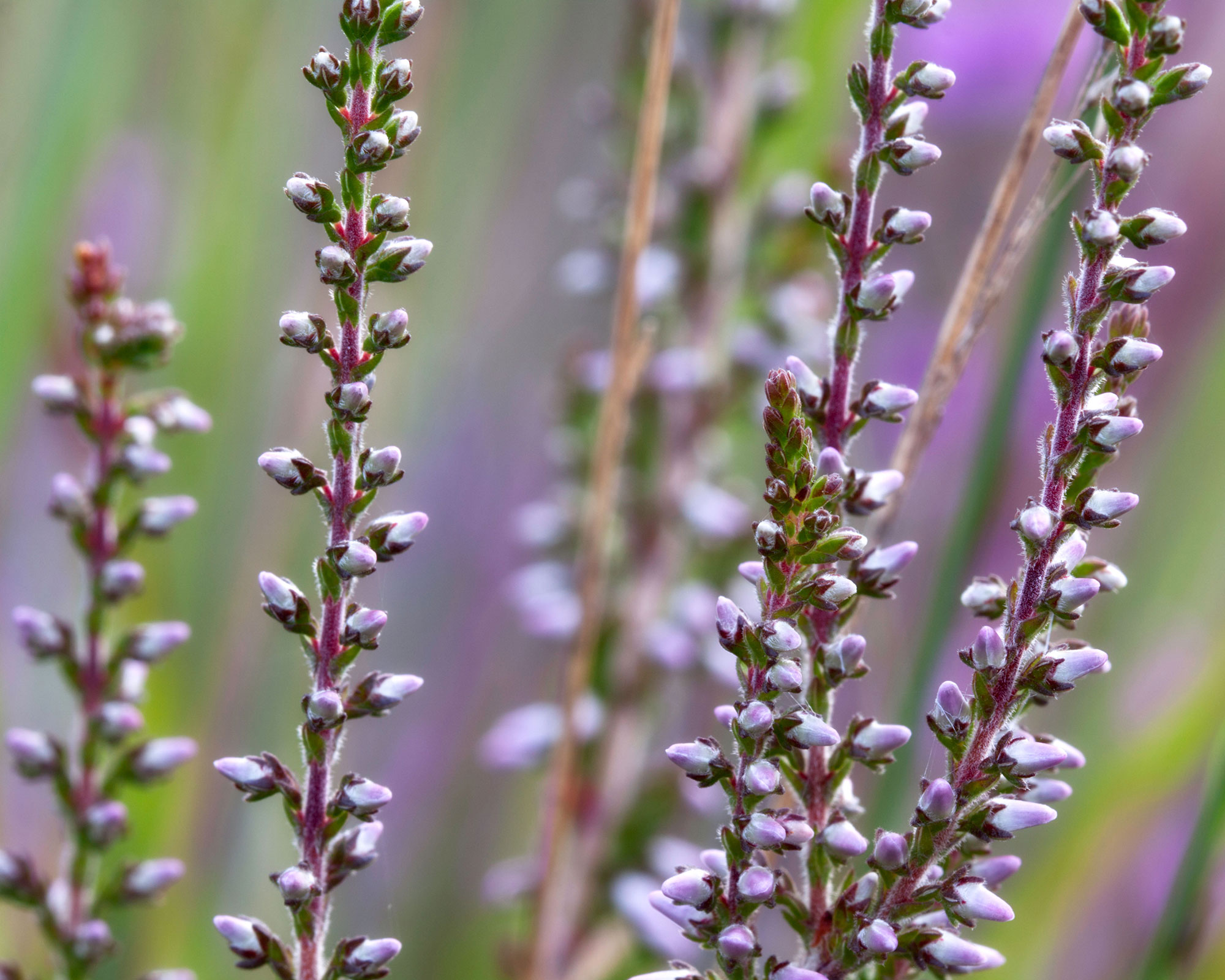
Scotch heather features an abundance of tiny flowers
- Hardiness: USDA Z2 (RHS H7)
- Height: 10-24in (25-60cm)
- Uses: Ground cover, edging, containers, cutting, drying
An excellent shrub for small gardens, this neat summer-flowering and fall-flowering shrub has upright stems crowded with short leaves and packed with tiny bells. In some varieties, the flowers are double and in others the buds never open but retain their color for many weeks.
These two groups provide a very long season of color. Many also have attractive gold or silver foliage.
Heathers need lime-free soil, and sun for most of the day. Clip back after flowering or in spring.
Top varieties to try include ‘H. E. Beale’ (double pink) and ‘Sandy (golden leaves, long lasting white buds).
3. Common camellia (Camellia)
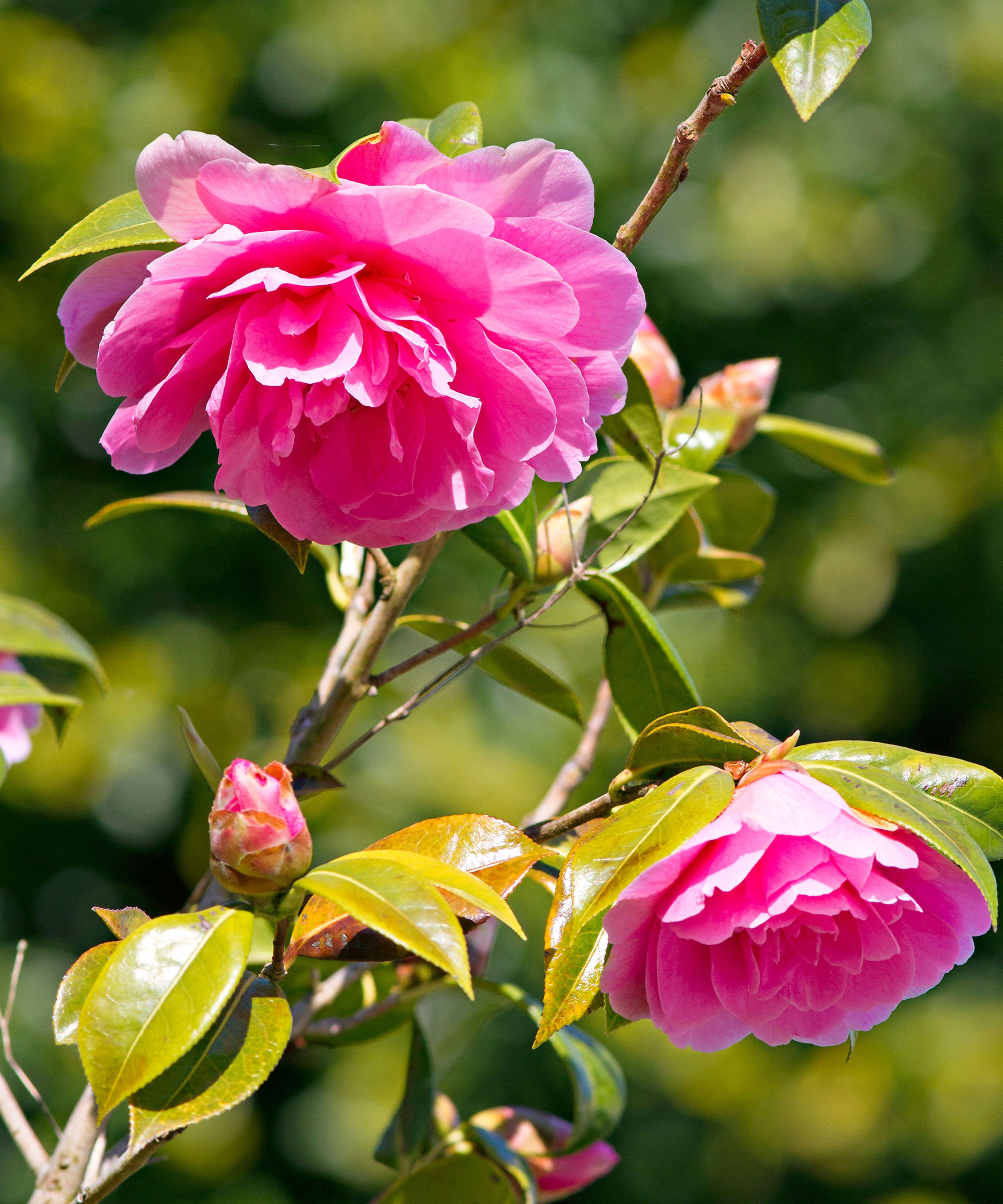
The beautiful blooms of camellias are a welcome sight in winter and spring
- Hardiness: USDA Z7-8 (RHS H4-5)
- Height: 6-8ft (1.8-2.4m)
- Uses: Containers, border specimen, wall shrub
If you're looking for a winter-flowering shrub, this evergreen is a good option. It's a prolific, slightly exotic looking evergreen shrub with glossy foliage and single, semi-double or double flowers that are a little like roses.
Blooming in the fall, winter or spring, depending on the variety and the climate, the flowers range from 2-5in (5-12.5cm) across and may be red, shades of pink, white or creamy, and are sometimes bicolored.
When it comes to camellias care, they are happiest in partial shade in lime-free conditions. They can be grown in full sun, but must never dry out. They are also happy in containers, but will need regular irrigation to keep them growing well.
Top types of camellias to try include ‘Nuccio’s Pearl’ (double white, tinted pink; spring) and ‘Yuletide’ (single, golden eyed scarlet; winter).
4. Wintercreeper (Euonymus fortunei)
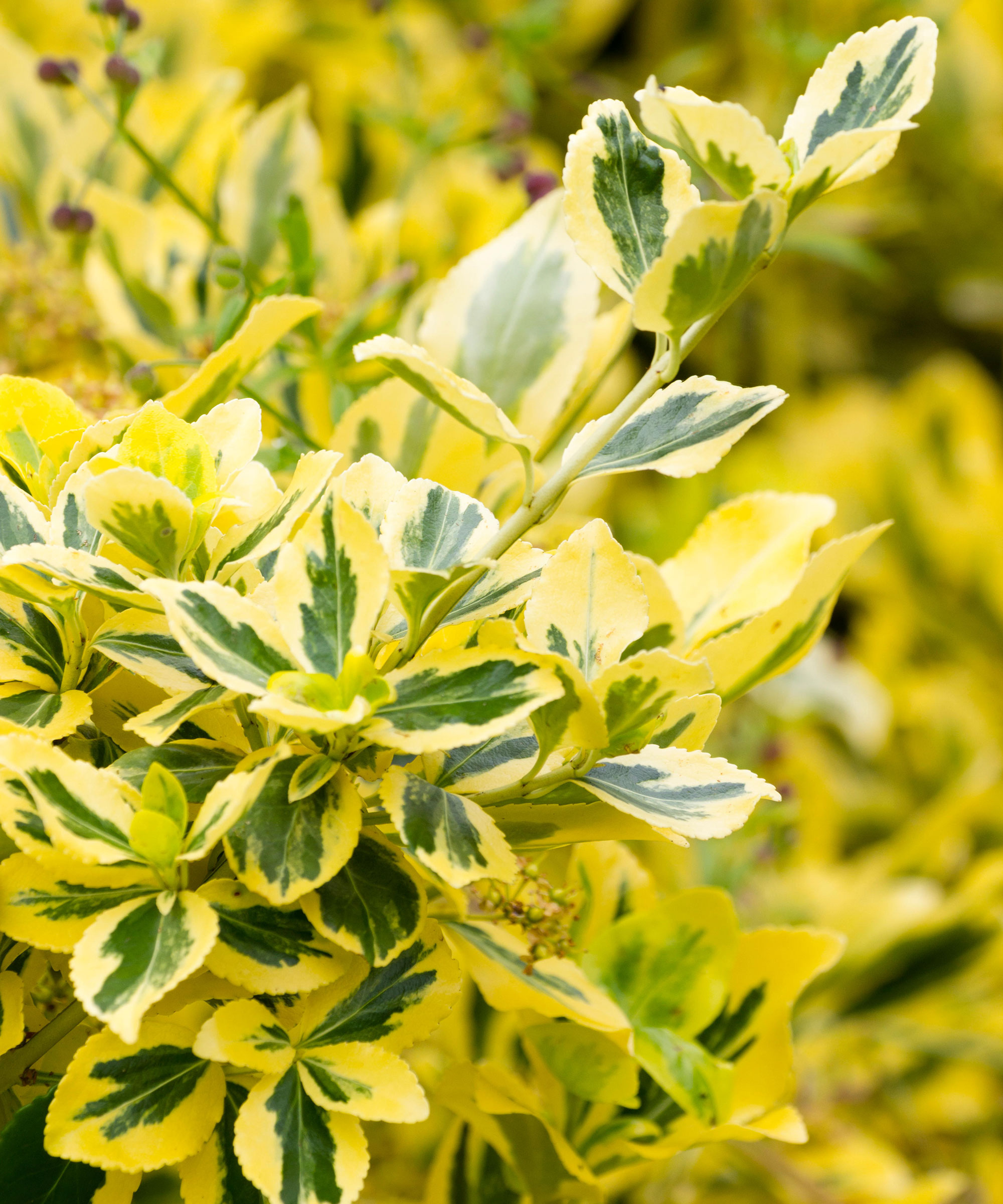
Variegated foliage of Euonymus fortunei 'Emerald 'n' Gold'
- Hardiness: USDA Z5 (RHS H5)
- Height: 1-4ft (30cm-1.2m)
- Uses: Ground cover, edging, containers, self-clinging vine, shade gardens
These are neat, slow-growing evergreen shrubs grown mainly for their colorful variegated foliage. Some are low and spreading and make good ground cover plants, some make rounded bushes, a few climb slowly and cling to tree trunks like ivies.
The leaves are small and dark green, but the most attractive varieties have gold or white edges or splashes and many develop pink tints in winter and pink-and-orange fruits.
If variegated varieties produce a shoot that is all green, snip it off with your pruning shears (also known as secateurs in the UK)
Look out for ‘Coloratus’ (vine, purple winter foliage) and ‘Emerald ‘n’ Gold’) (bushy, yellow edged leaves, pink winter tints).
5. Japanese aralia (Fatsia)
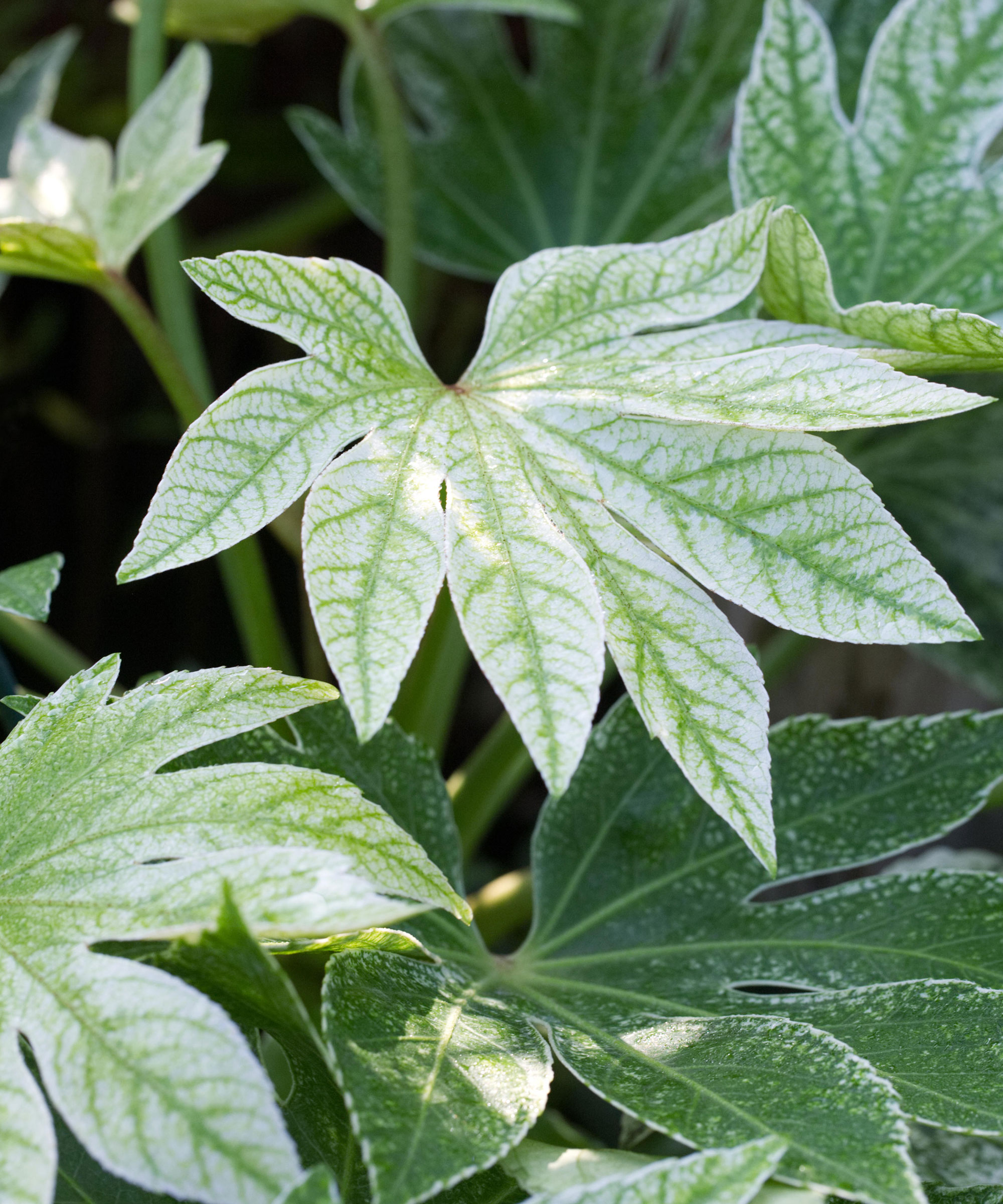
Fatsia 'Spider's Web' features speckled foliage
- Hardiness: USDA Z6 (RHS H5)
- Height: 6-10ft (1.8-3m)
- Uses: Impressive specimen, subtropical-style gardens in colder areas, containers
A bold, architectural evergreen shrub making an impressive feature even when still a young plant, the large, rich dark green leaves are up to 18in (45cm) across and impressively divided into nine lobes.
In fall, white stems carry branched heads of globular white flower clusters and these are followed by clusters of black spring berries.
It's happy in sun or partial-shade and quickly makes a striking specimen in any container gardening ideas.
Top varieties include ‘Spider’s Web’ (speckled foliage) and ‘Variegata’ (white leaf tips).
6. Gardenia (Gardenia)
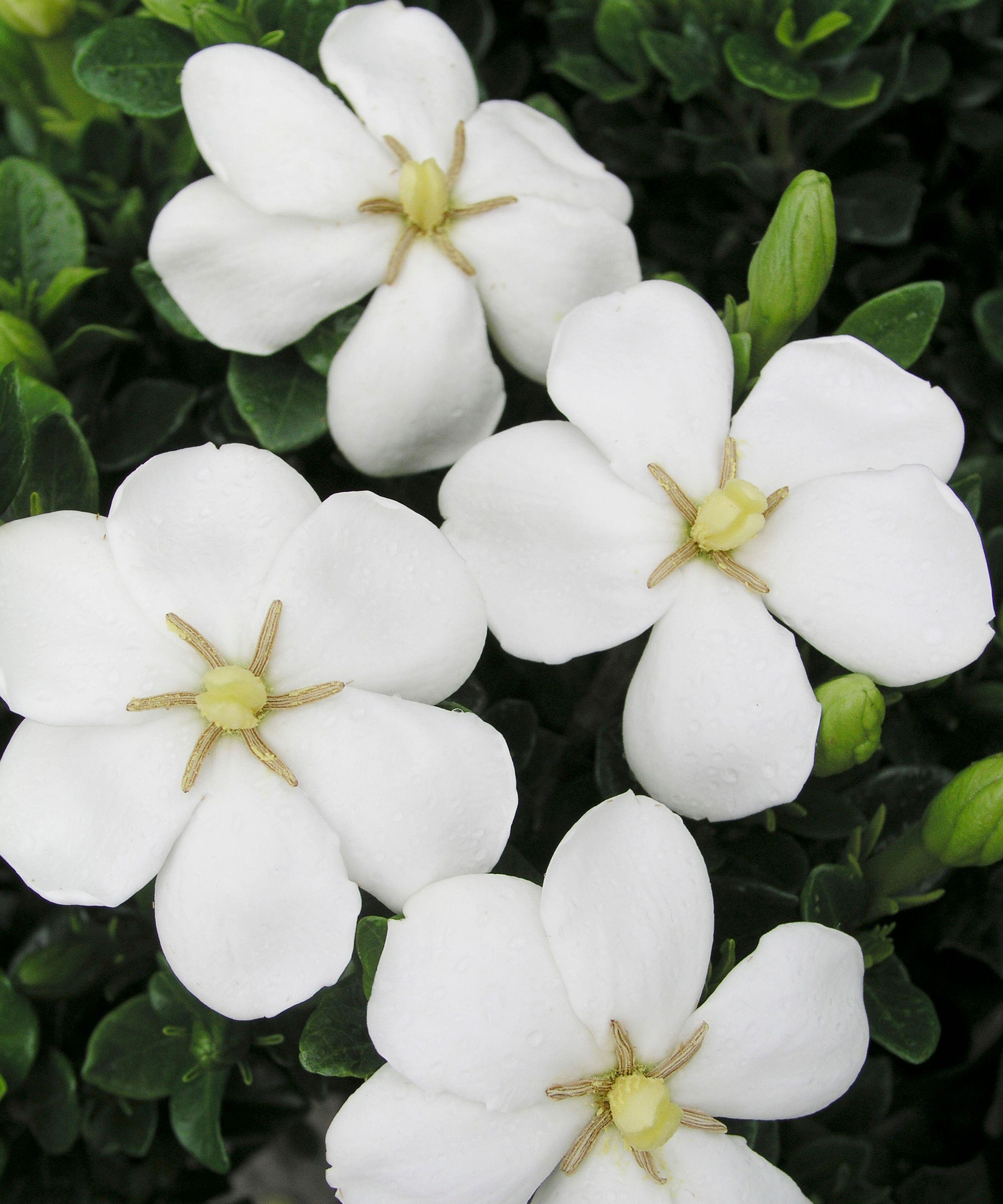
Gardenia 'Kleim's Hardy' is a cold hardy variety
- Hardiness: USDA Z7 (RHS H1c)
- Height: 2-5ft (60cm-1.5m)
- Uses: Indoor plant, patio or balcony container plant
This is the evergreen shrub that everyone wants to grow and which everyone can grow – even if you have no yard at all. Gardenia is an indoor plant in the north, a summer balcony or patio plant in warmer zones and in the south is an outdoor plant.
Its main feature is its large, usually double, white flowers set against glossy dark green foliage and, in particular, its superb summer and fall fragrance.
Deadheading flowers when they start to turn brown is advised to improve its appearance.
Good varieties to try include ‘Double Mint’ (neat, double flowers) and ‘Kleim’s Hardy’ (single flowers, the most cold hardy).
7. Mountain laurel (Kalmia)
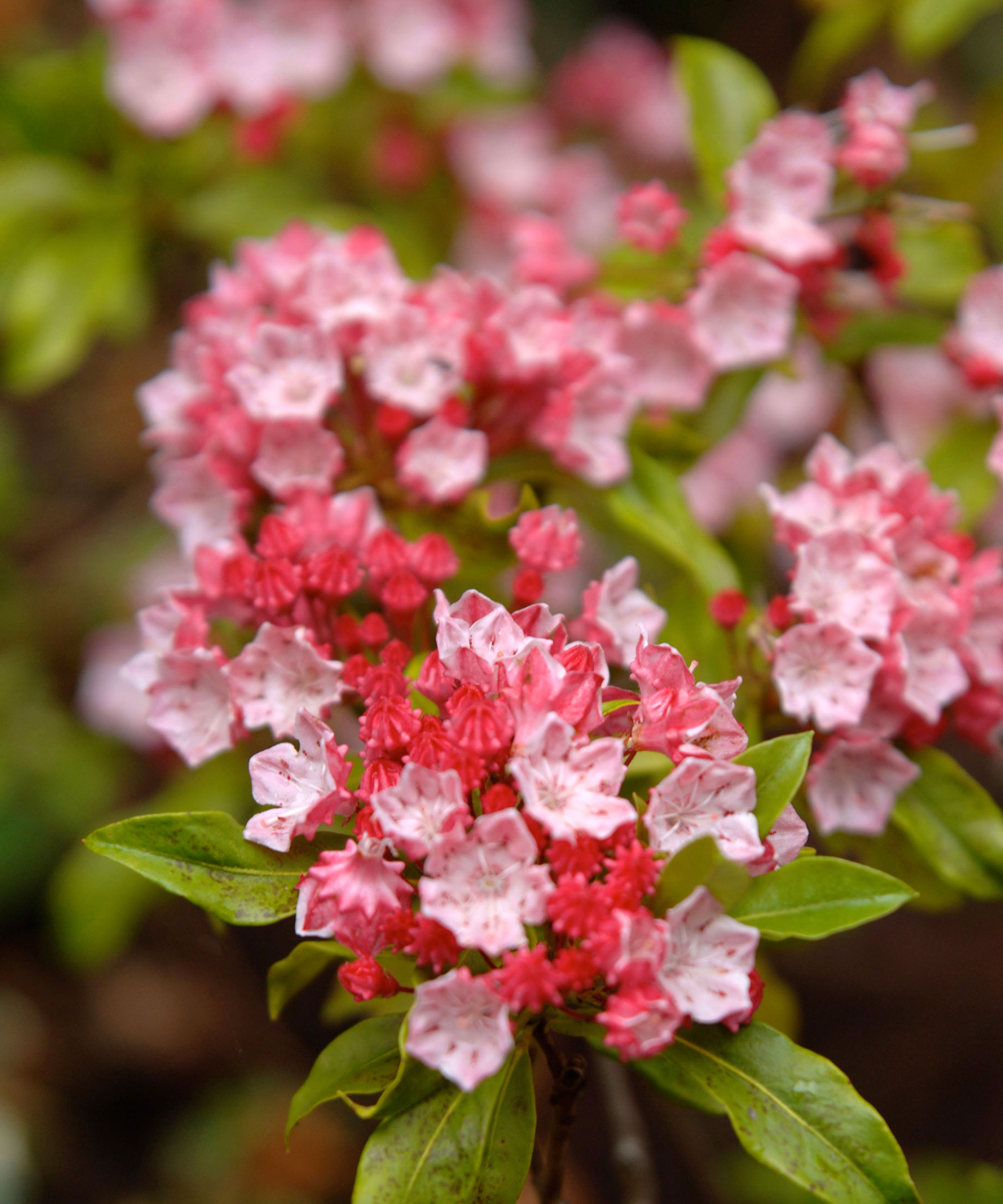
Mountain laurel 'Olympic Fire' features a mass of pink flowers
- Hardiness: USDA Z4 (RHS H6)
- Height: 6-15ft (1.m-4.5m)
- Uses: Border specimens, lawn specimens
These are colorful, native evergreens that make a dramatic early summer show that almost rivals rhododendrons. The narrow glossy foliage makes the ideal background for the crowded clusters of starry flowers opening from buds that resemble twists of cake icing.
Colors range from scarlet or deep red through pink shades to white – but with any number of patterns and combinations.
Mountain laurel insists on moist, lime-free soil and full sun or a little shade but may become bare at the base, in which case cut back hard in spring and irrigate and feed well.
Top varieties of this summer-flowering shrub include ‘Minuet’ (white flowers banded red, dwarf) and ‘Olympic Fire’ (pink flowers open from large red buds).
8. Cherry laurel (Prunus laurocerasus)
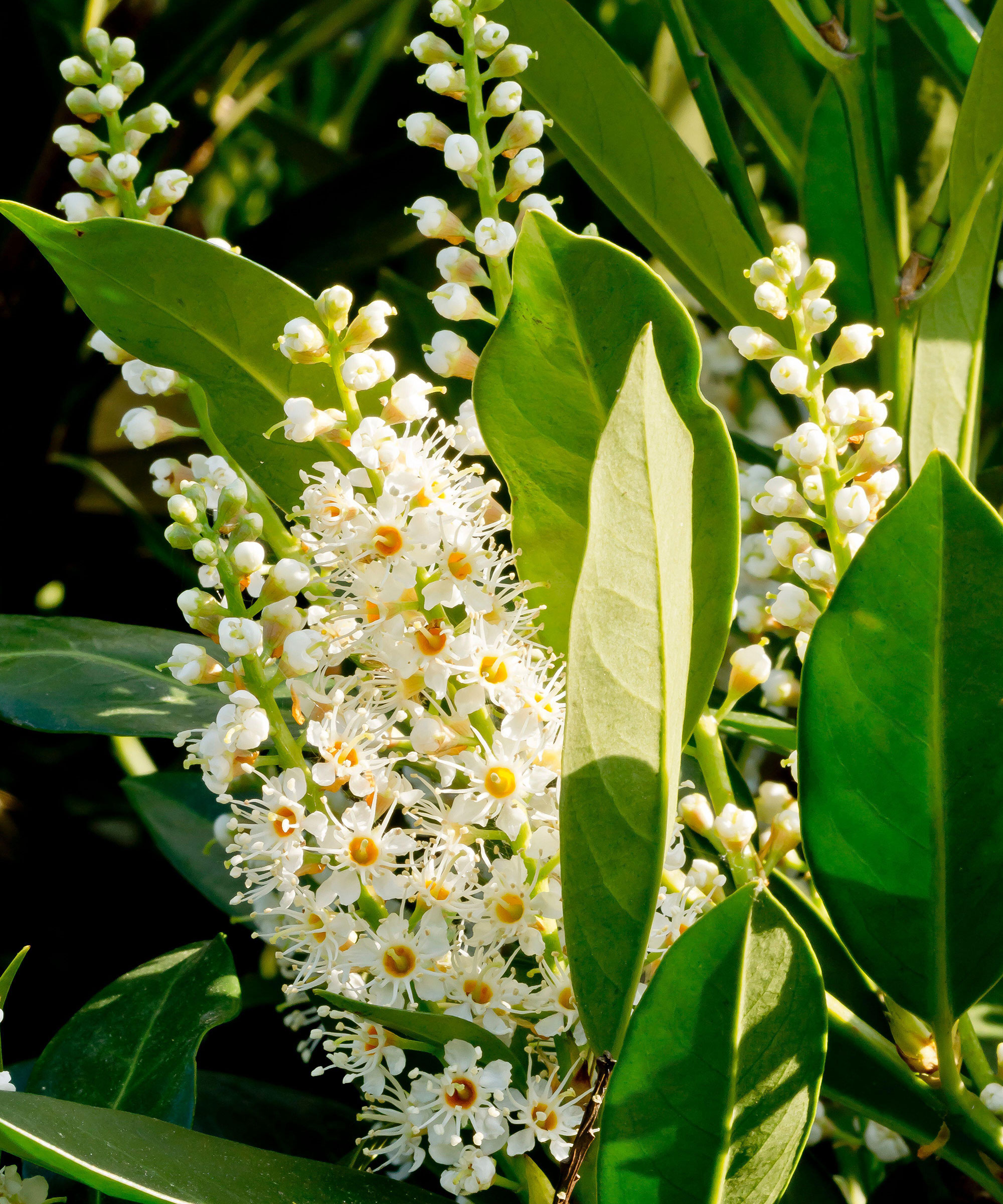
Prunus laurocerasus 'Otto Luyken' is a prolific flowerer
- Hardiness: USDA Z6 (UK H5)
- Height: 6-20ft (2-6m)
- Uses: Privacy screen or hedge
A relatively fast growing shrub, this strong growing, cold hardy shrub, is usually wider than tall, with narrow leathery glossy evergreen leaves. Cherry laurel is one of the best hedging plants if you're looking for a dense privacy screen or hedge and an attractive flowering specimen.
In spring upright spikes of creamy flowers stand up vertically from the branches like candles and are followed by red, cherry-like berries that turn black as they mature. It will grow happily in any fertile soil in sun or light shade.
Top varieties are ‘Schipkaensis’ (taller, bushier and especially frost hardy) and ‘Otto Luyken’ (dwarf, flowers prolifically).
9. Rhododendron
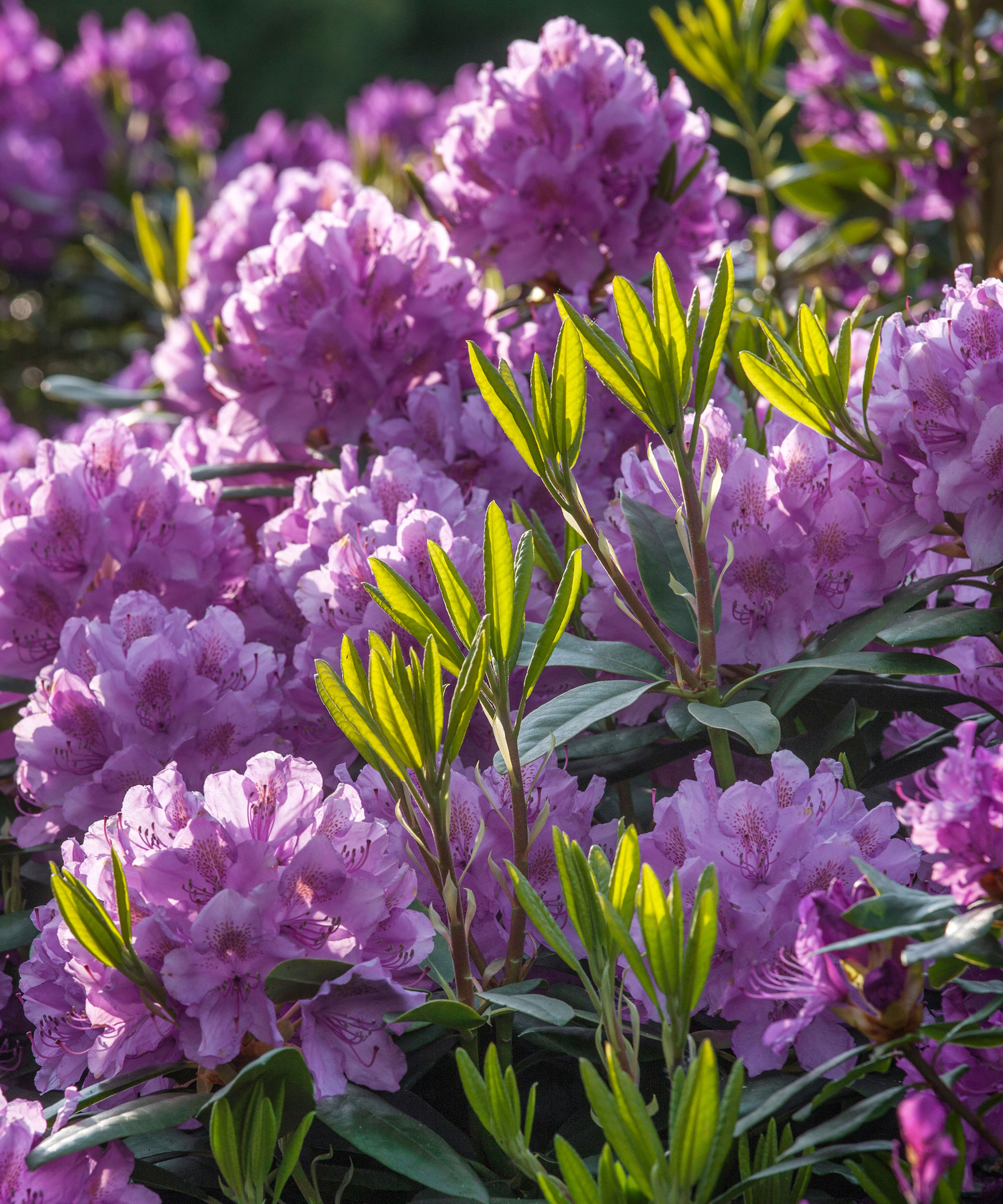
Rhododendrons are available in a huge number of colors
- Hardiness: Hardiness: USDA Z4-7 (RHS H4-6)
- Height: 1-20ft (30cm-6m)
- Uses: Flowering specimens, border features, containers
The most colorful of all flowering evergreen shrubs, rhododendrons are tough, cold hardy shrubs featuring flared, trumpet-shaped flowers in a vast variety of colors and color combinations, often prettily spotted. Ranging in height from a few inches to many feet, the foliage too brings us an additional all year feature.
It insists on lime-free soil types, most appreciate a little shade although many will flower well in sun if the soil is not parched.
The top types to choose from are evergreen azaleas (neat growth, spectacular in flower) and Yakushimanun Hybrids (very hardy and easy to grow, impressive foliage).
10. Laurustinus (Viburnum tinus)
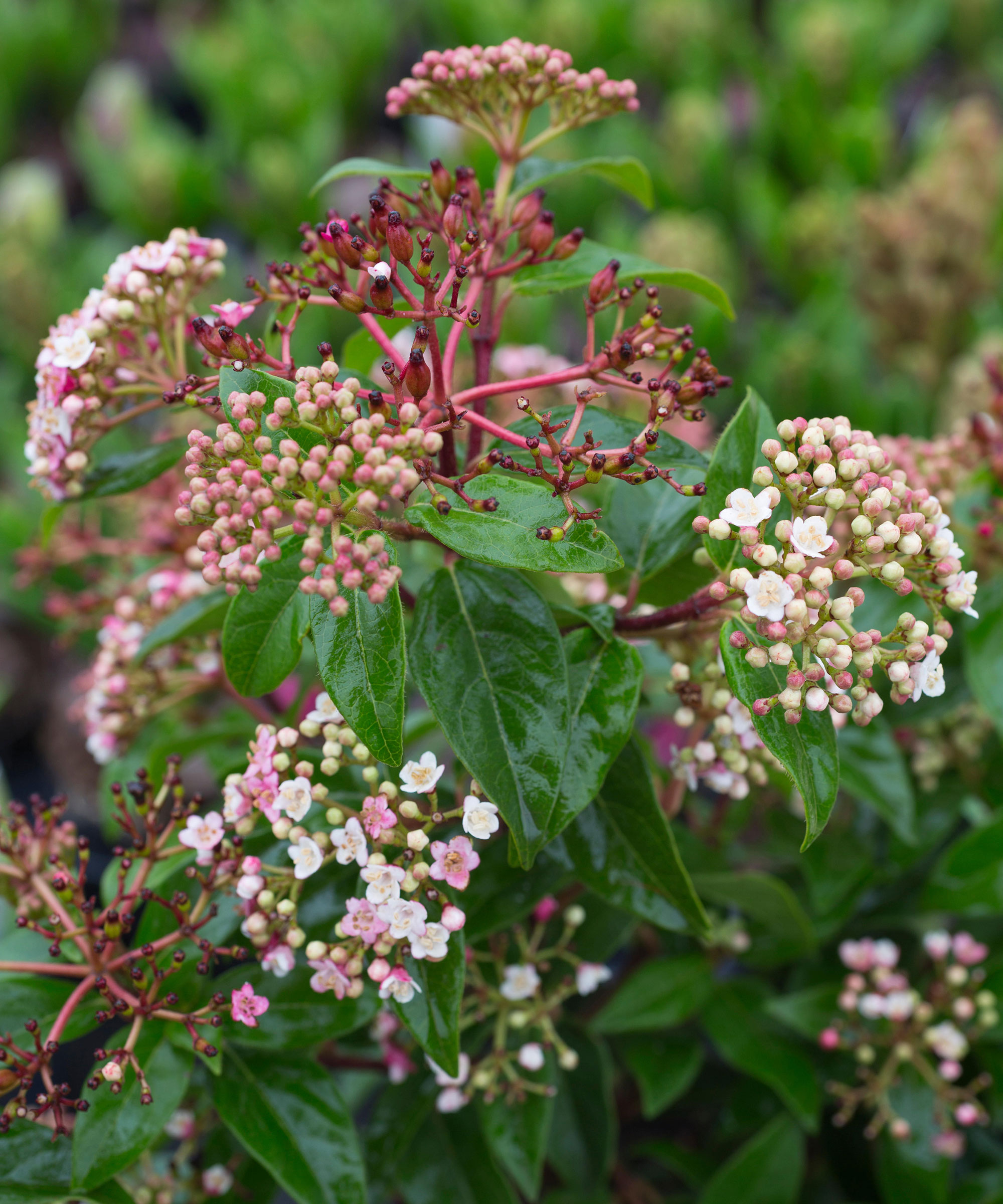
Viburnum tinus 'Eve Price' has bright pink buds
- Hardiness: USDA Z7 (RHS H4)
- Height: 6-20ft (1.8-6m)
- Uses: Good as tall ground cover, an informal hedge, a border specimen, foundation planting, and smaller varieties are good in containers. Increasingly popular for cutting.
A dependable and versatile evergreen shrub with dark green oval foliage that makes the perfect background to show off the clusters of small fragrant pink or white flowers in winter, often opening from darker pink or red buds. In mild areas the flowers may open from fall into early spring, with black berries to follow.
In terms of viburnum care, this variety is happy in fertile soil in shade, or in partial shade if the roots are moist.
Good types of viburnum to try include ‘Eve Price’ (compact growth, bright pink buds) and Spirit (‘Anvi’) ’ (white flowers from fall to spring).
Do you need to prune evergreen shrubs?
When it comes to pruning shrubs, there is no one rule of pruning for all evergreens, but they can conveniently be divided into three groups.
- Evergreens that flower in the summer or fall, including Scotch heather and Japanese aralia, are pruned in the spring when growth is starting.
- Evergreens that flower in winter or spring, such as mountain laurel and camellia, are best pruned soon after flowering.
- Those evergreens that are grown for their foliage can either be left unpruned, or cut back in spring to encourage fresh new growth, or clipped over once or twice a year to maintain a neat shape.
How can I make sure evergreen shrubs in containers survive the winter?
Evergreen shrubs growing in garden planters will take less cold than those planted in the open ground. It is wise to assume that your evergreens are one zone less hardy when grown in a container.
In late fall, move your containers close to the wall of your house or into a sheltered corner of your yard. Use pot feet to lift the container above the ground to allow surplus moisture to drain away – otherwise, in icy conditions, the whole pot will freeze solid and the roots of your evergreen will be frozen in a block of water! An alternative situation is to place them in a porch or cool sun room.
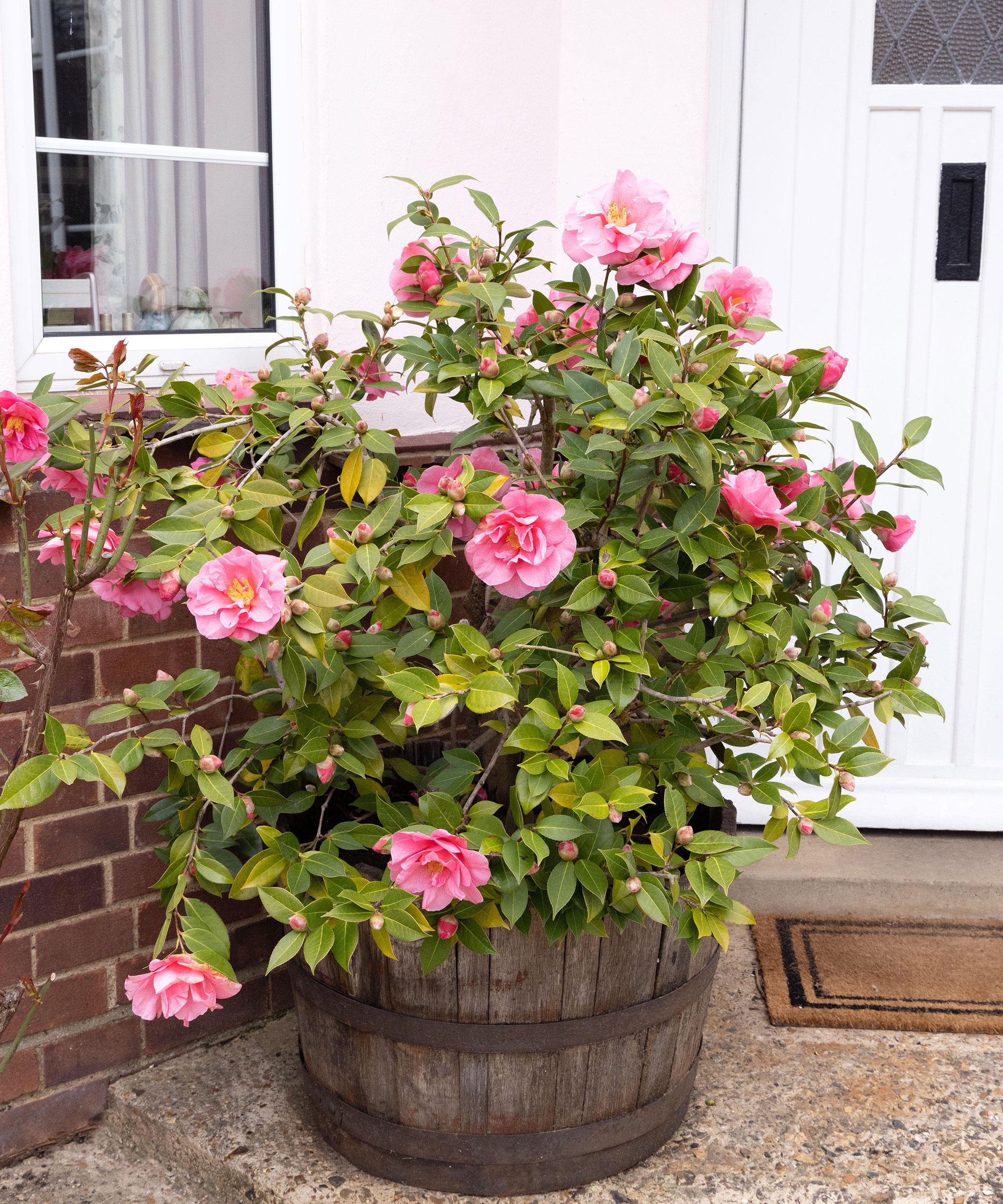
Evergreen shrubs growing in containers, such as this camellia, may need a little extra care than if grown in the ground
Why do the leaves on my evergreen shrubs turn dry and brown in winter?
You have chosen evergreen shrubs that are not winter hardy in your area. Check the hardiness rating for the evergreens that you have planted, you should find the hardiness zone on the tag that came with the plant. If, for example, your shrubs are rated at USDA Z7 and your yard is in USDA Z6 then your plants will be damaged by winter frosts and the leaves turning dry and brown is often the first sign.
You can find your hardiness zone by checking the Department of Agriculture Plant Hardiness Zone Map.
Learning how to protect plants from frost is a good idea, but evergreen shrubs growing in areas that are too cold for them can also be protected by planting in a sheltered part of your yard or by providing a fence or windbreak as protection against icy winds. Some plants will make fresh growth in spring if you prune out the damaged shoots, a few may even make fresh spring growth from below ground.

Graham Rice is a garden writer who has won awards for his work online, and in books and magazines, on both sides of the Atlantic. He is a member of a number of Royal Horticultural Society committees and the recipient of the 2021 Garden Media Guild Lifetime Achievement Award.
